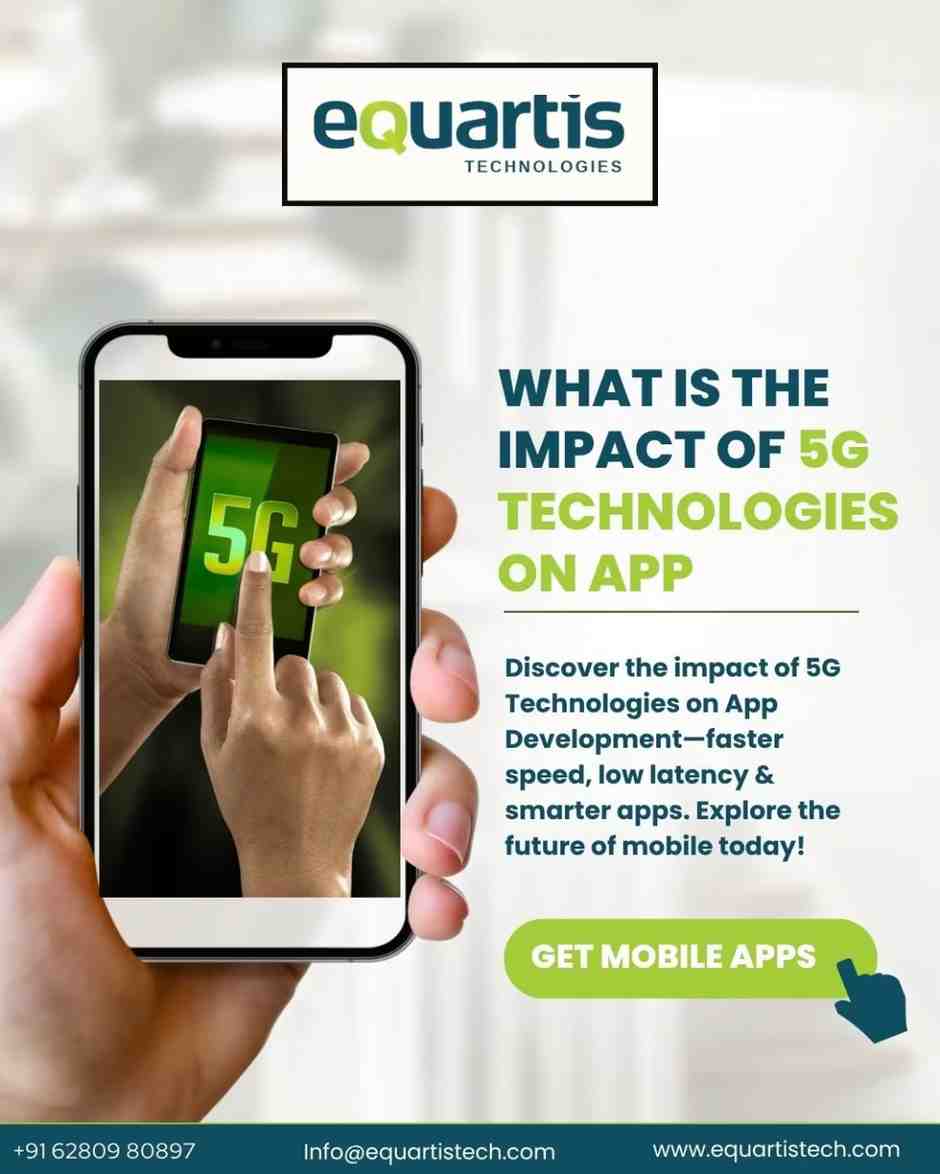


Discover the impact of 5G Technologies on App Development faster speed, low latency & smarter apps. Explore the future of mobile today
The advent of the fifth generation of wireless communication, commonly known as 5G, is ushering in an era of unprecedented digital transformation. 5G Technologies on App Development focus on delivering not just higher throughput but also ultra-low latency and massive connectivity at an industrial scale. This shift transforms how developers design, build, and deploy software, enabling richer user experiences and new service paradigms. In this blog, we will define 5G, highlight its differences from 4G, explore core benefits for mobile apps, and examine which app genres gain the most. We’ll also look ahead to future trends, discuss developer challenges, showcase real-world industry use cases, and conclude with strategic takeaways.
What Is 5G?
5G represents the fifth generation of cellular network technology, designed to supersede the capabilities of 4G LTE. It combines new radio interfaces with advanced antenna architectures—such as Massive MIMO (Multiple Input Multiple Output)—to boost spectral efficiency. These improvements enable higher data rates, reduced latency, and support for a vastly increased number of connected devices. 5G also introduces dynamic spectrum sharing, allowing carriers to allocate frequency bands adaptively between 4G and 5G based on real-time demand. As a result, users experience more reliable and consistent connectivity.
Frequency Spectrum: Sub-6 GHz vs. Millimeter-Wave
A key technical leap in 5G is the utilization of both sub-6 gigahertz frequencies and millimeter-wave bands. Sub-6 bands (below 6 GHz) offer balanced coverage and penetration through walls, while millimeter-wave (above 24 GHz) provides multi-gigabit speeds in densely populated areas. Beamforming technology further refines transmission by directing signals toward specific devices, reducing interference and improving energy efficiency. Together, these elements enable theoretical peak download speeds up to 20 Gbps—ten to twenty times faster than many 4G networks today.
Network Slicing for Customized Connectivity
Another foundational feature of 5G is network slicing, which partitions a single physical network into multiple virtual segments optimized for distinct application needs. For example, an emergency services slice can prioritize ultra-low latency and high availability, while a consumer entertainment slice can emphasize high throughput. This virtualization model grants carriers the agility to deliver customized connectivity profiles on demand. Developers can leverage network slices to guarantee consistent performance for specialized use cases.
Role of 3GPP in Standardization and Global Adoption
Standardization efforts also play a vital role in 5G’s maturity. The 3rd Generation Partnership Project (3GPP) defines the specifications, ensuring global interoperability and backward compatibility with 4G. These standardized protocols facilitate smoother device integration and a clearer development roadmap for software vendors. As devices and infrastructure align with these global standards, the ecosystem will expand rapidly, fostering innovation across industries.
The Rise of 5G Mobile Ecosystem
The term 5g mobile refers to the consumer hardware ecosystem—smartphones, tablets, IoT sensors, and gateways—that supports 5G’s advanced capabilities. Early adopters of 5G-enabled devices can already tap into high-speed services, though widespread coverage is still evolving. As network deployments accelerate and more regions embrace both sub-6 and millimeter-wave spectrum, device compatibility will become ubiquitous. Understanding these fundamentals lays the groundwork for appreciating how 5G diverges from its predecessors.
How 5G Differs from 4G
4G LTE was revolutionary for its time, delivering download speeds up to 100 Mbps and enabling mobile broadband adoption worldwide. However, the explosion of connected devices, streaming services, and emerging technologies soon outpaced 4G’s design thresholds. 5G addresses these limitations by offering real-world download speeds of 1–3 Gbps, dramatically expanding network capacity. This leap underpins the next generation of applications that require real-time interaction and massive device densities.
Expanded Spectrum Coverage Across Frequency Bands
The most visible shift from 4G to 5G lies in spectrum usage. While 4G largely operates below 3 GHz, the 5g network spans everything from low-band frequencies (600–900 MHz) to mid-band (3.5 GHz) and high-band millimeter-wave (24–100 GHz). Low-band extends coverage range and penetrates buildings effectively, mid-band balances speed and reach, and millimeter-wave offers ultra-high speeds over shorter distances. By integrating all three, 5G achieves an ideal mix of breadth and performance that 4G could never match.
Conclusion
We explored how the advent of 5G technologies in app development transforms speed, latency, reliability, and scalability for mobile and distributed applications. We defined the core elements of 5G, compared it to 4G, and outlined the primary benefits that drive innovation in AR/VR, IoT, cloud-based, and real-time communication apps. Also examined future trends such as advanced network slicing, edge-native architectures, AI at the network edge, and holographic experiences, while discussing key challenges around coverage, device fragmentation, security, power consumption, and testing.
